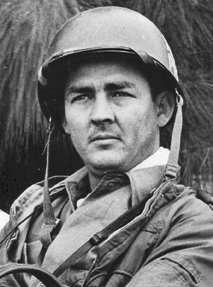Fred Waters covered eight conflicts around the globe  as a war correspondent for the Associated Press. He began his career in photography while serving in the Navy and Army during World War II and for several years after. Beginning in January 1952, he traveled the world covering conflict for the AP, including Korea, The Philippines and Cambodia.
as a war correspondent for the Associated Press. He began his career in photography while serving in the Navy and Army during World War II and for several years after. Beginning in January 1952, he traveled the world covering conflict for the AP, including Korea, The Philippines and Cambodia.
Waters covered the fall of North Vietnam during the French-Indochina War and was one of the last three newsmen to leave Hanoi before it was overrun by the Vietminh in 1954.
He was watched everywhere and was forbidden to take photographs. He hung his camera around his neck, and as he walked around, he aimed his body and shot pictures. Waters smuggled his film out of the country and provided the first photos from Hanoi under Vietminh rule. He worked in the line of fire, earning the respect of his peers and two Purple Heart medals. He was wounded in Korea, hurt in a helicopter crash in Laos and suffered an eye injury from a bamboo trap in South Vietnam.
AP transferred Waters to its St. Louis Bureau in the early 1960s. He covered politics, the civil rights movement, natural disasters and sports events. He covered the Kennedys, Richard Nixon, Nikita Kruschev and many other heads of state. He was in Memphis covering Martin Luther King Jr. when King was assassinated. He was in Birmingham, Ala., when public schools were integrated for the first time. Mr. Waters took pride in the fact that during his tenure in St. Louis he didn’t miss a home game of the of the football and baseball Cardinals. He lives in Gulf Breeze, Fla., with his wife of 50 years, Mary.
